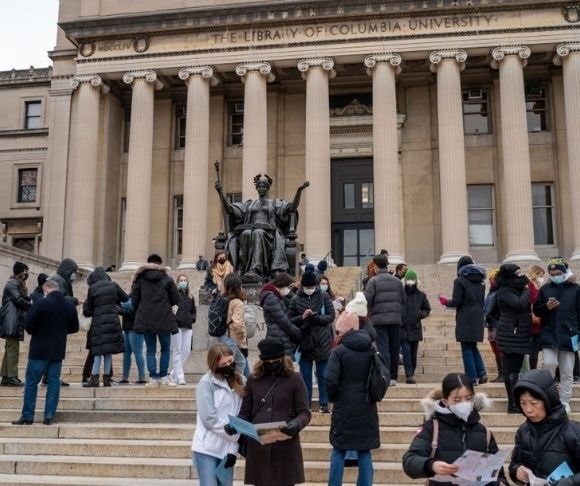Jon A. Shields penned the op-ed piece in question. It ran in The New York Times on April 7. Shields is “professor of government at Claremont McKenna College and a founding member of the Academic Freedom Alliance, a group founded last year to protect the academic freedom of professors,” a bio accompanying the piece states.
One would assume the founding member of an association dedicated to defending the assault on academic freedom on college campuses today would be familiar with the zero-sum game played by the zealous activists who push the “safe spaces” narrative. One might think he would know from hard, personal experience that it has nothing to do with the honest pursuit of knowledge or independent thought and everything to do with the flexing of rigid ideological power.
Accepting the language of cultural Marxism is always a capital error, as it is the first step in affording credence to that which is entirely unacceptable. The whole notion of “safe spaces” in the realm of higher education is to declare any way of thinking that goes against settled progressive orthodoxy on racial and social issues to be anathema. There is no middle ground to explore when the academic terrain is sloped in such a lopsided way.
The overarching message of Shields’ essay appears to be: I don’t want to say no to the forces of unbending ideological intransigence in my classroom, for that would cut off any ability to establish a dialogue. Soft-boiled nuance is presented as principled path. Shields writes:
“For example, I also encourage my students to assume that their peers are making arguments in good faith. I suspect this norm of charity discourages students from labeling one another as racists or sexists or transphobes.
Though not explicitly forbidden, I even hope that this norm inclines them to hesitate before branding ideas as inherently bigoted, since such charges tend to stick to the speaker and chill discussion.”
Encourage? Suspect? Hope? Has this man been on an American college campus lately? The good professor is politely asking his radical pupils to please stop tarring fellow students with the societal kill-shot word “racist” just because they wish to express a differing point of view. Anyone who has been paying the slightest bit of attention to university life over the past 30 years knows how successful such pleas from a supposed authority figure turn out. Shields seems to recognize this himself, yet he still dismisses it as a barrier to his lofty goals:
“Although I’m aiming for voluntary restraint rather than self-censorship, in practice some element of social pressure — and, thus, censorship — is probably inevitable. That doesn’t trouble me so long as these occasional acts of self-censorship actually widen spaces for the discussion of ideas by softening the climate of fear on our campuses.”
There’s a term for this: willful naivety in the face of an unpleasant reality. Shields wants readers to believe that he can transform threatening “social pressure” against conservative students into healthy self-repression of authoritarian tendencies by his leftist charges.
Theory Vs Reality

Columbia University, New York City (Photo by Robert Nickelsberg/Getty Images)
While Shields’ conservative twist on leftist authoritarian buzzwords may sound nice in the pages of The New York Times, it offers absolutely nothing to a 19-year-old student who knows full well that offering up the wrong opinion in a classroom setting can be a life-altering catastrophe.
And that is the problem at the heart of this essay. It is more concerned with turning a clever phrase than addressing the sense of institutional intimidation and suppression felt by countless conservative college students in America today.
A glance at Shields’ Claremont McKenna bio reveals that he relishes being the conservative who embraces progressive framing. It is something of a calling card for him. Thus, we see a list of “Recent Commentary” by the professor, all of it appearing in a particular staunchly cultural progressive dominant media organ:
- “How Donald Trump’s Brutish Code of Honor Explains His Feud with Liz Cheney,” New York Times, 3 February 2022.
- “A Hard But Real Compromise is Possible on Abortion,” New York Times, 19 October 2021.
- “Those Biden Gaffes? Some Key Voters Actually Like Them,” New York Times, 16 September 2020, with Stephanie Muravchik.
- “A Conservative Case for Identity Politics,” New York Times, 23 January 2018.
The identity politics piece is remarkably similar to the safe spaces treatise. In both instances, there is nothing flagrantly “un-conservative” stated. What is being put forward is the wholly unconvincing argument that those on the right should willingly allow an uncompromising hard-left to define the terms of a discussion in which their views will not be afforded a genuine hearing.




